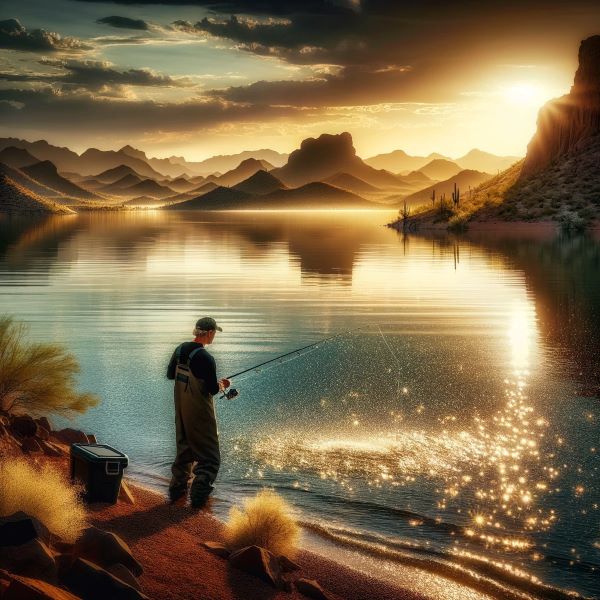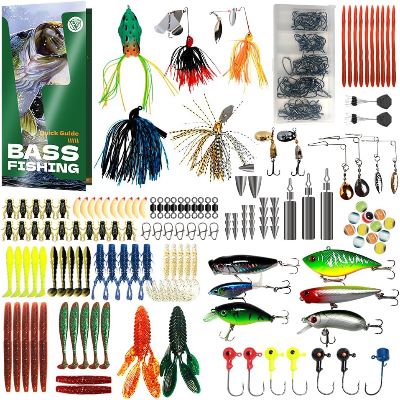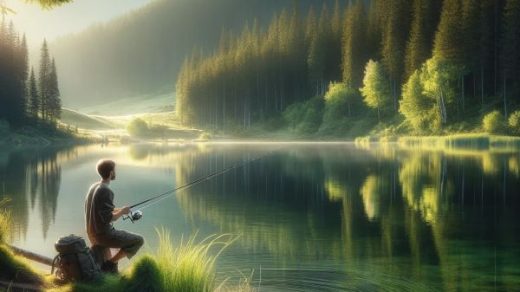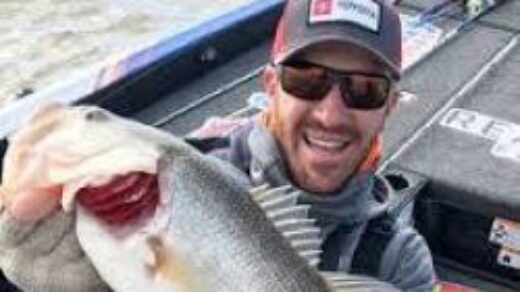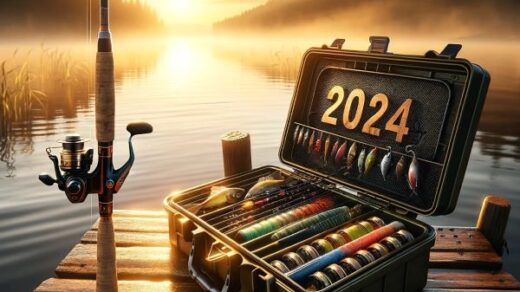Arizona has fantastic bass fishing!
Arizona, a landscape renowned for its desert vistas and towering canyons, is also a hidden gem for anglers—its waters teeming with a surprising diversity of bass species. Whether you’re seeking the thrill of landing a trophy bass or simply enjoying a day out on the water, Arizona’s lakes and rivers offer unparalleled fishing experiences. This comprehensive guide covers everything from prime locations to essential gear, ensuring your Arizona fishing adventure is both successful and memorable.
Why Arizona is a Premier Bass Fishing Location
Arizona stands out as a top destination for bass fishing enthusiasts due to several key factors:
Variety of Bass Species
Anglers in Arizona can target both largemouth and smallmouth bass, each thriving in the state’s diverse aquatic habitats.
Year-Round Fishing Opportunities
Thanks to Arizona’s mild winters, anglers can enjoy bass fishing throughout the year, extending the season beyond that of more northern locales.
Multiple Fishing Locations with Big Bass Potential
Arizona’s variety of fishing spots—from serene mountain lakes to vast desert reservoirs—offer anglers the chance to catch trophy-sized bass.
Here’s the fish species you can expect to find in Arizona’s premier lakes:
| Lake Name | Common Fish Species |
|---|---|
| Lake Mohave | Largemouth Bass, Smallmouth Bass, Striped Bass, Catfish, Rainbow Trout, Crappie |
| Lake Havasu | Largemouth Bass, Smallmouth Bass, Striped Bass, Bluegill, Catfish, Crappie, Redear Sunfish |
| Lake Roosevelt | Largemouth Bass, Smallmouth Bass, Crappie, Catfish, Carp, Walleye, Bluegill |
| Saguaro Lake | Largemouth Bass, Smallmouth Bass, Yellow Bass, Rainbow Trout, Walleye, Catfish, Bluegill |
| Lower Colorado River (Lake Martinez) | Largemouth Bass, Smallmouth Bass, Striped Bass, Catfish, Bluegill, Crappie |
Importance of Fishing Regulations and Licenses
Securing a valid fishing license and adhering to local regulations are essential for preserving Arizona’s aquatic ecosystems for future generations.
Professional Fishing in Arizona
Arizona’s lakes are competitive arenas for professional anglers, with tournaments highlighting the state’s status as a bass fishing haven and promoting sustainable practices.
Fishing Licenses and Fees
Before casting your line, ensure you have a valid Arizona fishing license and are aware of any additional fees for access or boat launching. Here’s a quick overview of potential costs:
| Requirement | Typical Fee |
|---|---|
| Arizona Fishing License | Varies (Annual resident adult: $37; Non-resident: $55; other options available) |
| Lake Access Fees | Varies by location (Approx. $5-$30 per vehicle) |
| Boat Launch Fees | Varies by location (Approx. $10-$20) |
| Tournament Entry Fees | Varies by event |
Essential Gear for Bass Fishing
A successful fishing trip starts with the right gear. Here’s what you’ll need:
Rod and Reel
Opt for a medium-heavy rod paired with a baitcasting or spinning reel for versatility.
To learn more about the right Rod and Real you can check out this article… It will help guide you to the best decisions.
Line
Choose from monofilament, fluorocarbon, or braided lines based on your specific fishing conditions and technique.
fishing line for bass, as the ideal choice depends on several factors like the specific fishing technique you’re using, water clarity, and cover.
Here’s a breakdown of the pros and cons of the most common types to help you decide:
-
Monofilament:
- Pros: Affordable, casts well, offers some stretch for shock absorption.
- Cons: More visible in water, absorbs water and weakens over time, memory can cause coiling.
-
Fluorocarbon:
- Pros: Nearly invisible in water, good abrasion resistance, less stretch for better lure control.
- Cons: More expensive than mono, can be tricky to tie knots, some find it a bit stiffer.
-
Braided Line:
- Pros: Super strong, very thin diameter for long casts, no stretch for excellent bite detection.
- Cons: Highly visible in water, not good for absorbing shock (can result in lost fish), more prone to backlashes.
Here’s a general guide for choosing a line based on fishing technique:
- Crankbaits and Jerkbaits: Fluorocarbon or monofilament (10-17 lb test) for their buoyancy and shock absorption.
- Jigs and Flipping: Braided line (30-50 lb test) for strength and abrasion resistance in heavy cover.
- Topwater lures: Braided line (30-50 lb test) for strong hook sets, or monofilament (15-25 lb test) for added casting distance.
- Drop Shot and Finesse Fishing: Fluorocarbon (6-12 lb test) for invisibility and better bite detection.
Remember, these are just recommendations. Always consult with experienced anglers or your local tackle shop for specific advice based on your fishing situation.
Lures and Baits
Stock your tackle box with jigs, plastic worms, crankbaits, spinnerbaits, and swimbaits to attract bass.
lure for bass fishing as it depends on various factors like the season, water conditions, and the bass’s feeding behavior. However, some general purpose lures that consistently produce results include:
-
Soft Plastic Worms: A versatile bait that can be rigged and fished in numerous ways to imitate worms, lizards, or creature baits. Great for all year-round bass fishing.
-
Jigs: Effective for flipping and pitching near cover, jigs come in various weedless designs and can be tipped with trailers like plastic worms or creature baits.
-
Crankbaits: These lipless crankbaits mimic small baitfish and come in diving depths to target bass at different water levels. Effective for covering water and triggering reaction strikes.
-
Spinnerbaits: A combination of a vibrating blade and a wire arm with a skirted head, spinnerbaits offer flash and vibration to attract bass. Excellent for searching for bass and in low-light conditions.
-
Topwater lures: Mimicking frogs or injured baitfish on the surface, these lures can entice explosive strikes. Examples include poppers, which create a “popping” sound, and walking baits, which are designed to be “walked” across the water’s surface.
Here are some additional tips for choosing lures:
-
Match the hatch: Try to select lures that resemble the natural forage bass are feeding on in that particular lake or river.
-
Consider water clarity: In clear water, opt for more natural-colored lures. In stained or murky water, brighter colors or lures with rattles can attract attention.
-
Lure action: Experiment with different lure retrieves to mimic fleeing baitfish, struggling prey, or a wounded minnow.
Remember, success often involves trial and error. Observe what other anglers are using and what seems to be working on the day. Over time, you’ll develop your own favorite lures and techniques.
here is a bass fishing starter kit that covers most of the Baits
Accessories
Don’t overlook essential tools and accessories like fishing pliers, line cutters, and a well-organized tackle box. I bought this tool set from Amazon it was the best tools out there.
Best Times to Fish
Maximize your chances of a successful catch by hitting the water at optimal times:
| Lake Name | Best Fishing Times |
|---|---|
| Lake Mohave | Spring (March-May) for bass; Fall (September-November) for catfish and striper |
| Lake Havasu | Early Spring (February-April) for largemouth and smallmouth bass; Fall (October-November) for various species |
| Lake Roosevelt | Spring (March-May) for bass and crappie; Winter (December-February) for walleye |
| Saguaro Lake | Spring (March-April) for largemouth bass; Winter (November-February) for trout |
| Lower Colorado River (Lake Martinez) | Spring (February-April) for bass; Fall (September-November) for catfish and bluegill |
Fishing Licenses and Fees
Before casting your line, ensure you have a valid Arizona fishing license and are aware of any additional fees for access or boat launching. Here’s a quick overview of potential costs:
| Requirement | Typical Fee |
|---|---|
| Arizona Fishing License | Varies (Annual resident adult: $37; Non-resident: $55; other options available) |
| Lake Access Fees | Varies by location (Approx. $5-$30 per vehicle) |
| Boat Launch Fees | Varies by location (Approx. $10-$20) |
| Tournament Entry Fees | Varies by event |
Boat Considerations and Camping Options
Bringing a boat? Check lake-specific restrictions on size and engine type. If your fishing adventure extends into the night, many lakes offer camping facilities, from primitive sites to developed campgrounds.
Conclusion
Arizona’s bass fishing scene is a blend of challenge and beauty, offering diverse species, year-round opportunities, and the thrill of the catch. With the right preparation and respect for regulations, your fishing trip will not only be enjoyable but also contribute to the conservation of these splendid waters.
Additional Resources
For up-to-date information on licenses, regulations, and camping, visit the Arizona Game and Fish Department or contact the managing authorities of the lakes discussed in this guide. Here’s to a successful fishing adventure in Arizona!
